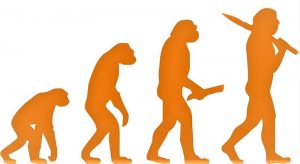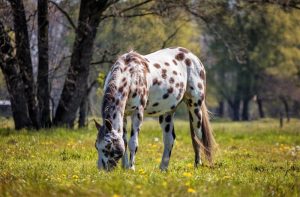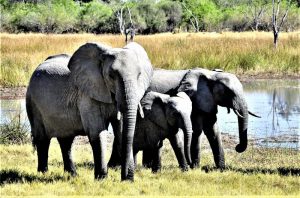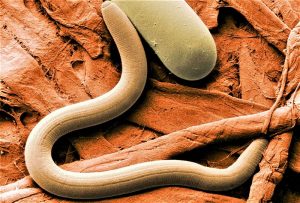Phylogeny
The word phylogeny has its origin in Greek language and this one comes from the meanings of the words union: "phylon" that means tribe or ethnicity and "gene" whose meaning is to produce or to generate. It is catalogued as a biology branch that studies the origin and development of species in general. The biologist Ernst Haeckel was the first scientist to use the word in 1866, and the theory came to confirm the different theories that had already been proposed by biologists Charles Darwin and Alfred Russel Wallace, both scientists who believed and affirmed that living beings did not remain immutable, but present different types of evolution over time. It is an area of biology that studies the development of the species that inhabit our planet and the different types of organisms that inhabit it. Phylogeny is in charge of studying in depth the evolutionary relationships between the different species and organisms, trying to establish different lines very similar to the genealogical trees in which the offspring and the degree of kinship between them are shown.
What is phylogeny?
Phylogeny is a broad branch of biology that studies the development and the species that inhabit the planet generally, also studying their origin, emphasizing that human beings are not immutable, but on the contrary are constantly changing.
Etymology
The word phylogeny is known as a neologism. A neologism refers to the birth of a new word in a certain language, it can also refer to the inclusion of a new meaning to a word that already exists. This word was coined by German professor Ernst Haeckel during the years 1834 and 1919. It is made up of two different roots that are: Phylon, which refers to ethnicity, tribe or species. And the word Geneia, whose meaning is origin. It is from this conjunction of words and meanings that we know that it studies the origin of the species.
Human phylogeny
Phylogeny is the branch of science that studies the similarities that can occur between the different species members from a morphological, anatomical and embryological point of view. It is in charge of studying the different bifurcations, the families and the genetic structures they have. When we refer to the human phylogeny, we must mention that our evolutionary tree has been evolving in function of new theories, among them, that our ancestor is the homo sapiens, according to several investigations that have been carried out with time passing. The different changes that the human being has been presenting, such as bipeds and intellectual, mental and cognitive changes, such as language, have humanized us with time. Seen in this way, it gives us the possibility to study and understand why we are similar to other hominids and which aspects are unique to our species.
Animal phylogeny
Animal phylogeny is the branch of biology responsible for establishing relationships between animals based on their common origin or a common ancestor. Its main goal is to get the ancient root by studying different fossils that have been found, conducting studies of their characteristics and making DNA analysis to determine which characteristics are common to other different individuals. The animal phylogeny looks for how to discover the origin of the animals in order to give them a correct classification. The studies of this branch also focus on the study of the symmetry of the animals, the presence or not of true tissues.
Plant phylogeny
The phylogeny of plants is also known as the evolutionary history of plants and seeks the right way to approach the evolution of them, according to their complexity levels, starting from microalgae to plants that have angiosperms. The origin of the plants is closely related to the plant cell or algae, which was the first eukaryotic being capable of photosynthesis and which has managed to acquire its plasto.
Of reptiles
The reptiles known as synapses include the mammals we commonly observe, and a large number of fossil forms related to them and known as “reptiles”, however, they are not considered as reptiles. As for the reptiles’ internal phylogeny, if only the current forms are taken into account, they would have to be classified as follows: reptiles, turtles, lizards, snakes and crocodiles.
Of fish
According to the phylogeny, fish belong to the group called paraphyletic and are vertebrates that are not tetrapod. The fish are then classified into:
- Agnates: fish that do not have a jaw.
- Chondrichthyans: fish that are cartilaginous such as sharks and manta rays, have visible gill slits and a skeleton of a single cartilage.
- Osteichthyes: are fish that do have skeletons and gills.
Molecular phylogeny
This is the branch in charge of studying the hereditary differences concerning molecules, mainly the human body’s different DNA sequences in order to find evolutionary relationships between them.
Language phylogeny
It is the process by which it is possible to understand the evolutionary and universal origin of the relations between human beings as a species, comparing them with other different ancient species. It studies the changes that have occurred during language development of human beings and the relationships that can be established through language.
Examples
Animals can be divided into reptiles and mammals, in addition, reptiles are subdivided into snakes and crocodiles such as cobra, anaconda and caimans, while on the other hand, mammals can be subdivided into rodents and primates, such as mice, gorillas, horses, etc..
Another clear example we can cite is in humans. Beginning with the Gibbon, then the orangutan, passing to the chimpanzee, gorilla and finally evolving into the human.
How to cite this article?
Briceño V., Gabriela. (2019). Phylogeny. Recovered on 4 May, 2025, de Euston96: https://www.euston96.com/en/phylogeny/










